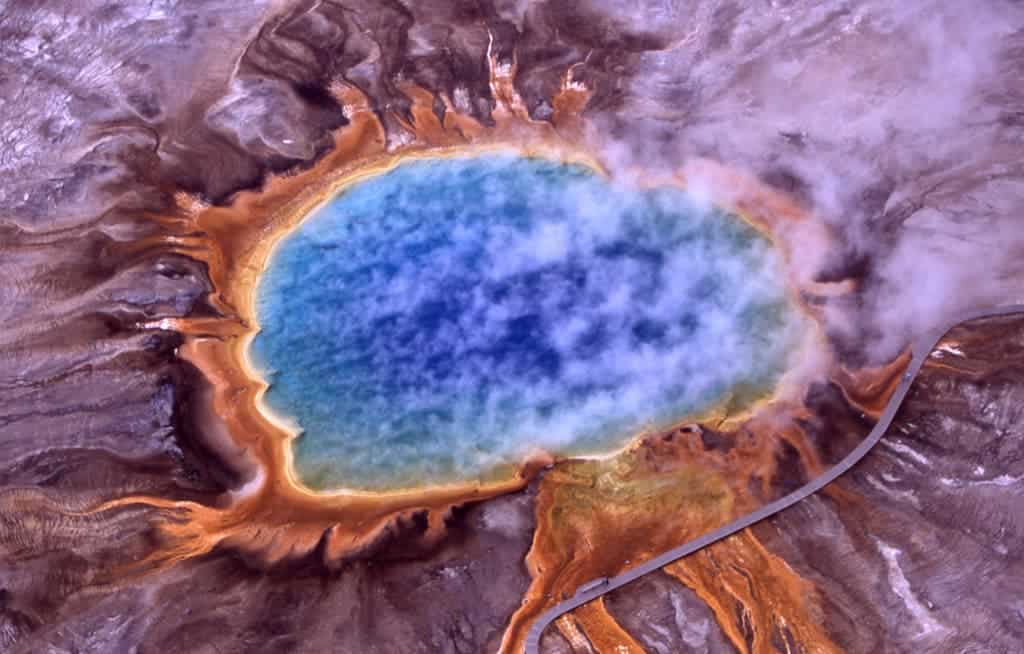Some 4.5 billion years ago, a planet called Theia crashed into the Earth, with the resulting debris giving birth to the Moon. Not long after that, the first living creatures emerged on Earth, new research suggests.

If you think about it, the whole field of paleontology is pretty amazing. The fact that we’re able to tell so much about creatures that lived millions of years ago — from fossilized remains and similar clues — is mind-bending. But fossils, the cornerstone of paleontology, require very specific conditions to form, and the fossil record is anything but continuous; typically, it’s fragmented and incomplete.
As a result, fossils generally tell isolated episodes and it’s up to researchers to figure out the whole story. But the more and more you go down the path of time, the trickier things get — and that’s with macroscopic creatures. If you go beyond 1.5 billion years ago, multicellular life hadn’t even evolved. Finding telling fossils is difficult enough in the first place but finding microscopic fossils, that’s a whole new ball game.
The oldest compelling case for life on Earth is 3.7 billion years old, but there is some evidence for even earlier microorganisms, almost 4 billion years ago. But according to the new study, life emerged no less than 4.5 billion years agogeo, when the Earth’s surface had just cooled down.
The problem is that 4 billion years is so long ago that very few parts of the planet’s crust have remained intact. The Earth is an active place and, in geological time, things can change quite a lot, as the old crust is recycled and new crust is constantly created. Combine this with the inherent frailty of microscopic fossils and you start to understand why there’s a very good chance that we’ve missed some of the earliest fossils.
Holly Betts, lead author of the study, from the University of Bristol’s School of Earth Sciences, explains:
“There are few fossils from the Archaean and they generally cannot be unambiguously assigned to the lineages we are familiar with, like the blue-green algae or the salt-loving archaebacteria that colours salt-marshes pink all around the world.”
“The problem with the early fossil record of life is that it is so limited and difficult to interpret — careful reanalysis of the some of the very oldest fossils has shown them to be crystals, not fossils at all.”
So in order to look at the bigger picture, researchers also analyzed another important piece of evidence: DNA.
“Fossils do not represent the only line of evidence to understand the past. A second record of life exists, preserved in the genomes of all living creatures,” adds co-author Professor Philip Donoghue, also from Bristol’s School of Earth Sciences.
So Betts, Donoghue, and colleagues, looked for the so-called Last Universal Common Ancestor (or LUCA, for short) using the so-called “molecular clock.” The molecular clock uses differences in the genomes of individual species to tell how much time has passed since the two shared a common ancestor.
With this, they derived a new timeline that challenges the date of the earliest known Earthly life, finding that LUCA appeared hundreds of millions before the earliest fossils we’ve found, dating to a time when our planet was still cooling down.
Co-author Professor Davide Pisani said:
“Using this approach we were able to show that the Last Universal Common Ancestor all cellular life forms, ‘LUCA’, existed very early in Earth’s history, almost 4.5 Billion years ago – not long after Earth was impacted by the planet Theia, the event which sterilised Earth and led to the formation of the Moon.”
“This is significantly earlier than the currently accepted oldest fossil evidence would suggest.

Intriguingly, they’ve also found that one billion years later, two different lineages of life emerged from LUCA: Archaebacteria (microbes with no cell nucleus with a number of unique properties) and Eubacteria (all the other bacteria). They also found that the Eukaryotes, the lineage which led to all macroscopic life and humans themselves, is not a primary lineage of life.
“It is rather humbling to think we belong to a lineage that is billions of years younger than life itself,” Pissani says.
This type of study, combining both fossils and genetic analysis, is becoming more and more common, as it enables scientists to tell a broader story — analyzing not only early species and their evolution, but also evolution itself. As if paleontology wasn’t awesome enough already.
The study has been published in Nature Ecology & Evolution.


